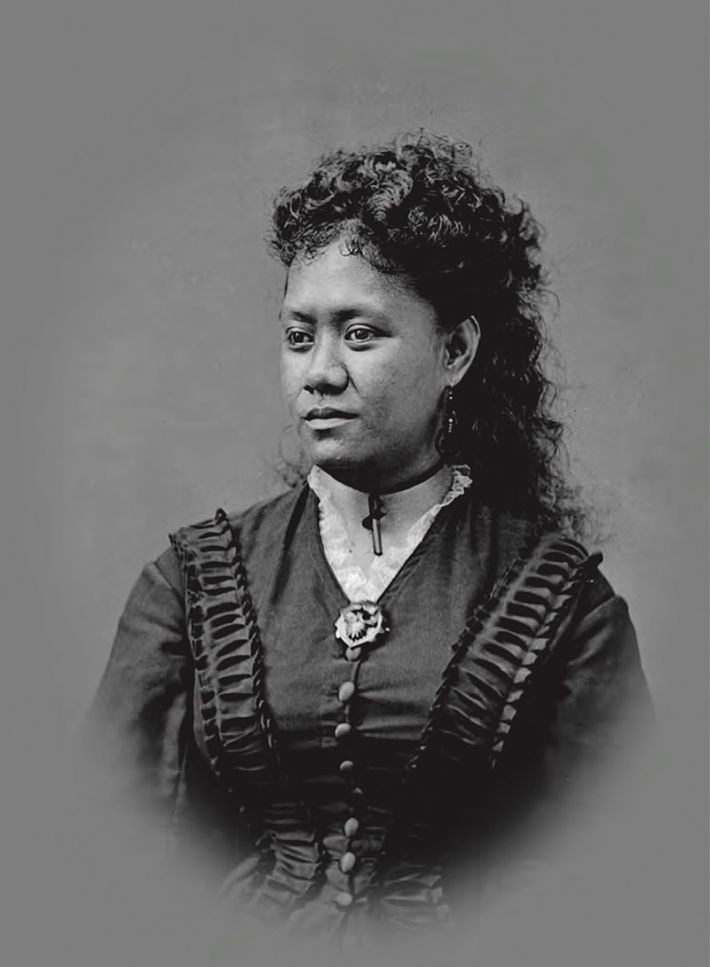In this Kūkahekahe, we celebrate the bicentennial of the birth of Charles Reed Bishop, husband of Princess Bernice Pauahi Pākī by sharing the story about a little-known act of aloha for a dear friend and member of the Kamehameha ʻohana.
Born in New York on January 25, 1822, Charles Reed Bishop would arrive in Hawaiʻi in 1840 and stay in the islands for more than 40 years. He became a naturalized citizen of the Kingdom of Hawaiʻi in 1849. Bishop’s marriage to Ke Ali‘i Pauahi was perhaps the greatest foundation for his lifelong attachment to Hawaiʻi and its peoples. As an aliʻi, Pauahi was expected to serve and care for the Hawaiian people: no less was expected of Charles as her husband. He would serve with aloha in many trusted roles in the kingdom government for five Hawaiian monarchs, from 1859 to 1891. When the princess passed away in 1883, Bishop became a kahu to her legacy.
During their lives, Ke Aliʻi Pauahi and Bishop focused their charitable efforts on the health and education of the lāhui. Hansen’s Disease or leprosy was first diagnosed in the kingdom in 1848. Successful treatment was unknown at the time, and in order to stop the spread of the disease, those afflicted were isolated and sent to Kalawao, Kalaupapa, Molokaʻi. One of the names for leprosy among Hawaiians was maʻi hoʻokaʻawale, the separating sickness, because of the devastating separations from family, friends, and community that occurred. The earliest years at Kalaupapa saw a severe lack of medical facilities, housing, and other necessary provisions for patients. Despite efforts to contain the disease, the effects of leprosy were deeply felt by the lāhui, even in the royal circles.
Kapoli Kamakau, sometimes referred to as Lizzie Kapoli Kamakau, had lived with the Bishops for many years and was a close friend of the princesses Likelike and Keʻelikōlani. She served as a lady in waiting for Queen Liliʻuokalani and was also considered her protégé as a noted singer, composer and musician. As a sixteen-year-old, she collaborated with Liliʻuokalani and Likelike on the famous mele “Ahe Lau Makani” and also contributed to “Liko Pua Lehua.” She composed “Waikiki, Ka Iiwi Polena,” “Pua Koolau Lei O Kaiulani,” and “Ei Ala La I Ka Uka.”
Kapoli’s life took a tragic turn, however, when she was diagnosed with leprosy in 1888. The news devastated those around her, because although conditions at Kalaupapa had improved over the years with increased funding and under the care of individuals like Belgian Catholic priest Father Damien, there remained a great need for support and care for patients with Hansen’s disease.
Before Kapoli’s departure for Kalaupapa, Bishop wrote to Superintendent of Kalaupapa Rudolph Wilhelm Meyer, as well as to the Minister of Interior Lorrin A. Thurston about building a home for nā wāhine in the colony; he offered to fund the construction of such a home using his own monies. Bishop provided funds and the government built the Charles R. Bishop Home (also sometimes called the Pauahi Home) in 1888 to allow Kapoli and other young women and girls to reside in comfort and safety. A “comfortable home” was built for Kapoli on the grounds of the property while the construction began and Bishop wrote to Meyer that he was glad she was satisfied with the arrangement. In 1889, Mother Marianne Cope and Sisters Vincentia McCormick and Leopoldina Burns were charged with the care of the patients at Bishop Home. The three Catholic sisters of the Third Order of Saint Francis received financial sponsorship from Charles. In this way, Bishop ensured that beloved Kapoli and others like her would be as comfortable and well-taken care of as possible in Kalawao.
Hawaiʻi became Bishop’s true home, one that occupied the greater part of his heart and mind during his long life, and indeed has continued in perpetuity thanks to his acumen and generosity. As students, alumni, staff, employees, and trustees of the Kamehameha Schools, we carry forward the same kuleana of actualizing Pauahi’s vision of uplifting the lāhui that Bishop bore in his lifetime.
To read more about Charles Reed Bishop’s life, see “Charles Reed Bishop, Man of Hawaiʻi” by Charles Kent (Kamehameha Schools Press, 1965). To read more about Kapoli’s life and to learn about the lives of patients, read the book “Kalaupapa, A Collective Memory,” (Hoku Welowelo), by Anwei Skinses Law (UH Press, 2012).

Noted composer and close friend of the Kamehameha ʻohana, Kapoli Kamakau.
__www-width-710/jpg/8422)
Charles Reed Bishop and Princess Bernice Pauahi Bishop in San Francisco, 1875.
TAGS
charles reed bishop,
200th anniversary,
kalaupapa
CATEGORIES
Kaipuolono Article, Regions, Hawaii Newsroom, KS Hawaii Home, Kapalama Newsroom, Kapalama Home, Maui Newsroom, KS Maui Home, Newsroom, Community Education, Department News, Ho‘okahua, Hawaii campus, Kapalama campus, Maui campus
Print with photos
Print text only










